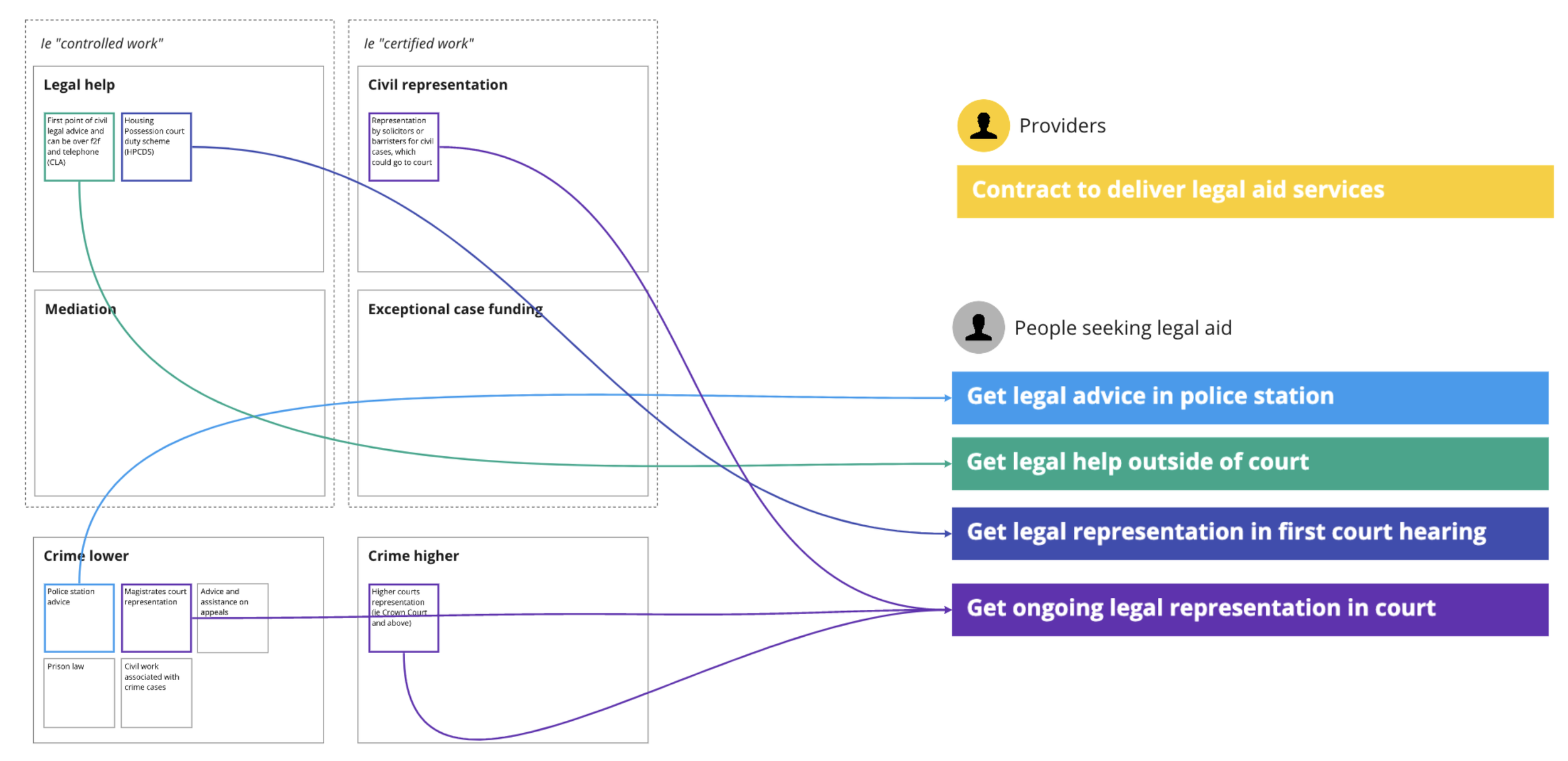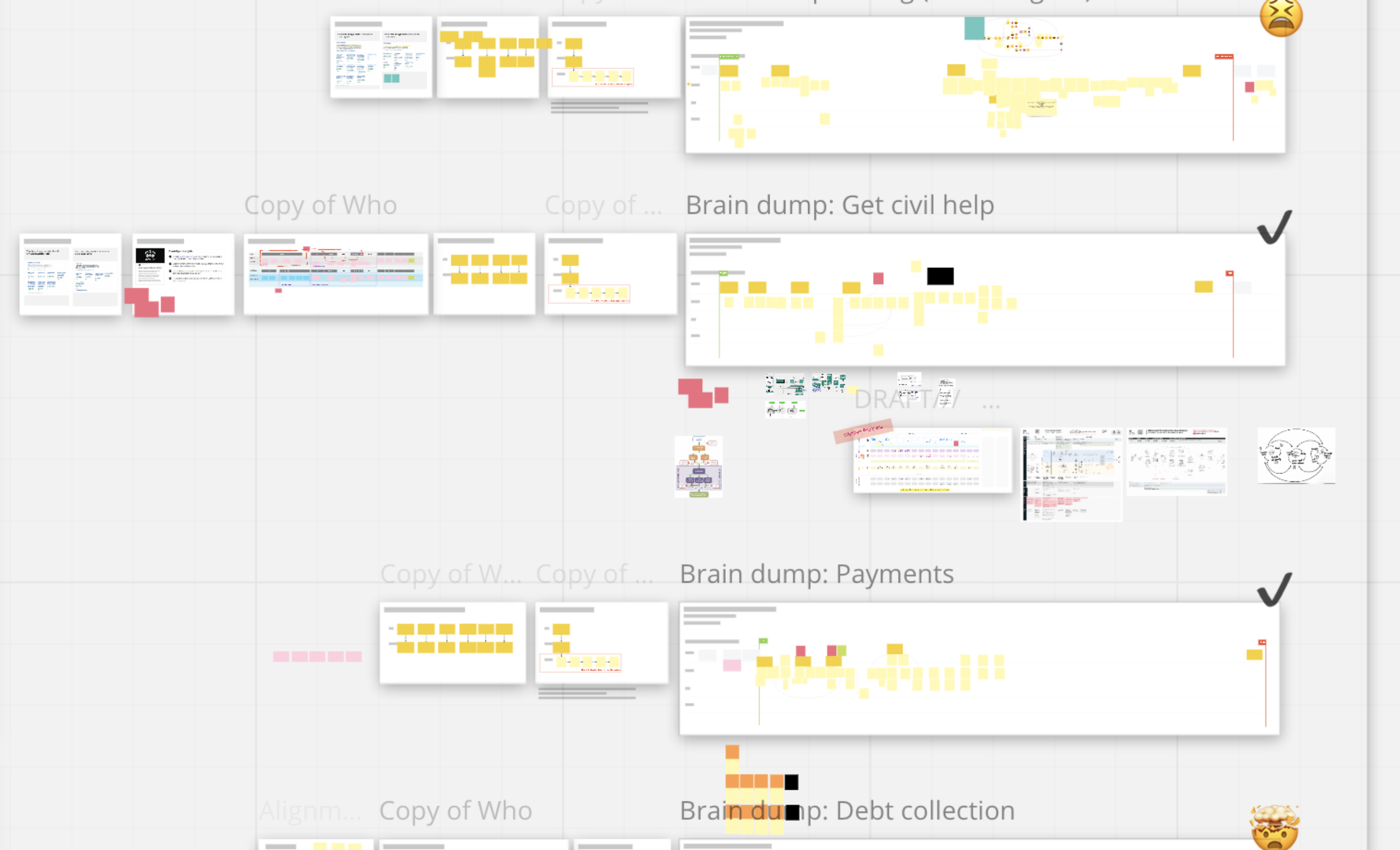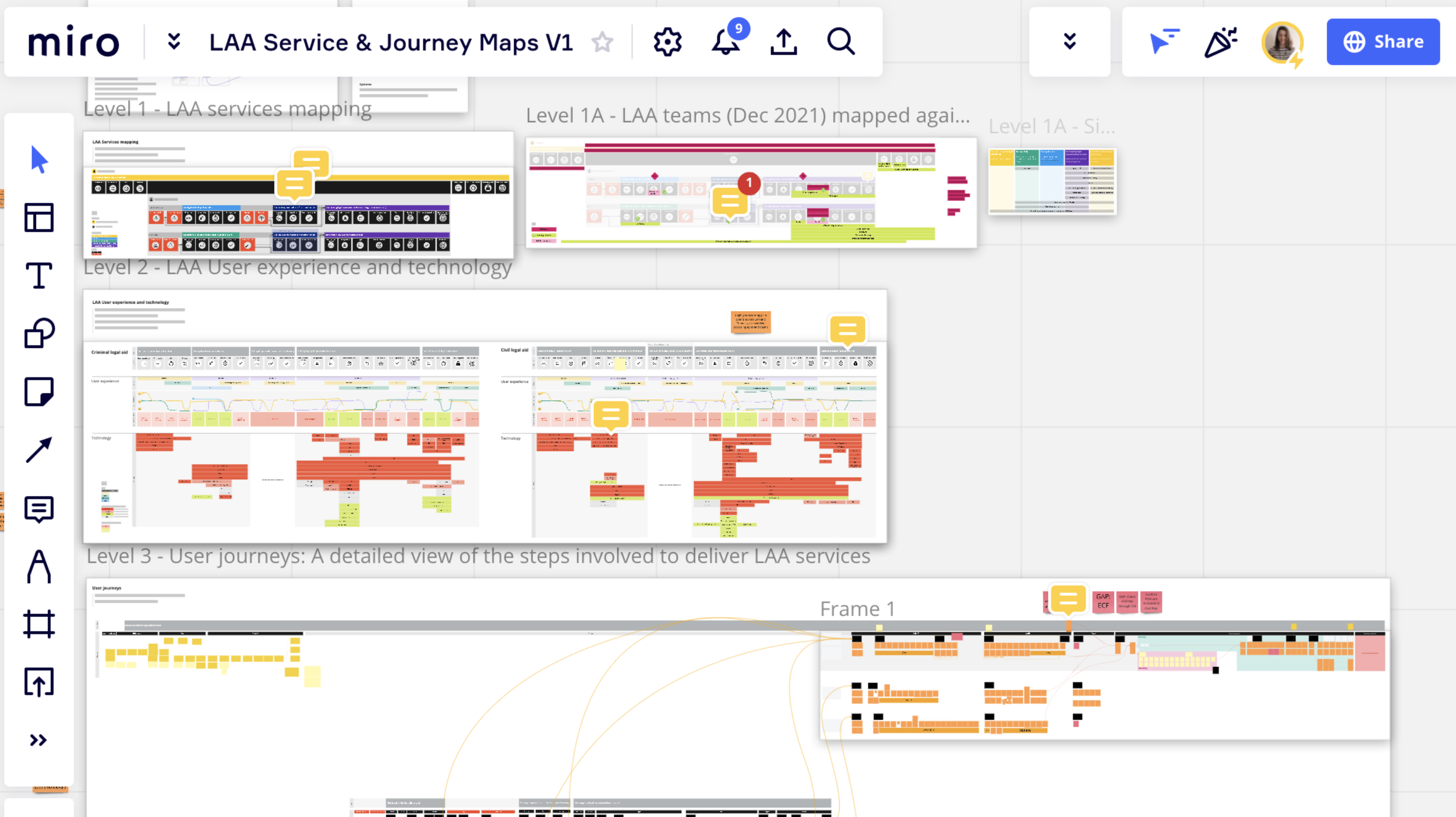
Encourage a service and user centred culture in the Legal Aid Agency
Background
Legal aid is available for those who cannot afford the costs of dealing with a criminal or civil problem.
Having said that, getting legal aid is complicated. The services the Legal Aid Agency (LAA) provide are arranged around organisational structures and dictated by (mostly legacy) technology.

The left-hand side of this image shows how services are referred to. For example, ‘crime lower’ or ‘certified work’. The right-hand side shows the language I suggested for the organisation to use. For example, ‘get legal advice in police station’.
Task
We want to improve LAA services. But first, we needed to create a shared understanding of what our users’ experience was – from the moment their need arises to payment and beyond. With that in mind, I started this piece of work to break the invisible silos of our teams and to bring together existing research and internal knowledge.
Role and approach
As a Senior Service Designer, I paired with a Senior Product Manager and conducted nine workshops to map specific parts of the user journey with subject matter experts.

Brain dump of nine mapping workshops with subject matter experts
I then piece these together to map the end-to-end user journey for providing and getting various types of legal aid.
I held sessions with product managers and the research community to gather feedback, identify gaps in our knowledge and highlight the ups and downs on the user experience.
I created various ‘levels of zoom’ so that different audiences could engage with the work.

Different zoom levels. Level 1 gives the audience an overview of the services the LAA providers. Level 2 provides them with more details on the technology and user experience. Level 3 is a detailed view of the user journeys.

Feedback session with product managers and user researchers so they could input on the work
Results
Once the first iteration of the service maps were done, I took the work on a roadshow. I walked analysis, researchers, developers, product managers, delivery managers and our Digital senior management team through our users’ experience. I did the same for Directors in LAA and for the LAA CEO.

Detail of ‘Level 2’ that shows the ups and downs on the users’ experience, our level of confidence on that information and what technology supports the delivery of that part of the journey
This map is now used as an onboarding tool in LAA Digital. The feedback received is that it is now much easier to understand how it all fits together and what the people we serve have to go through.
This work also supported the department to:
secure extra funding to tackle the size and state of our technical estate
prioritise what work our teams should tackle next
reuse existing service patterns to speed up prototyping and testing
align service areas and service ownership with the stages of the user journey
create a case for how we could deliver value quicker and move away from legacy technology faster if only legal aid policies and process could be simplified or consolidated